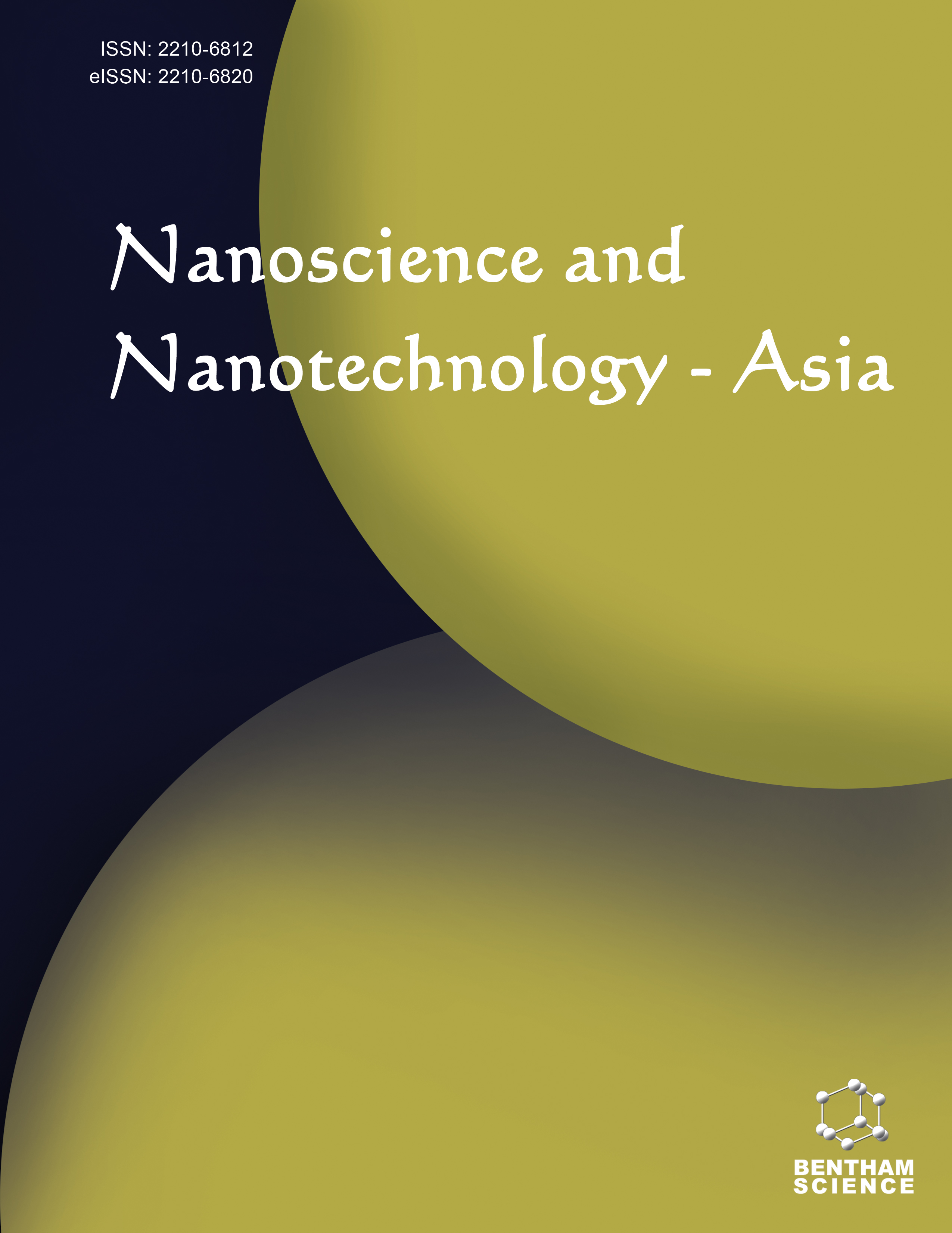- Home
- A-Z Publications
- Nanoscience & Nanotechnology-Asia
- Previous Issues
- Volume 12, Issue 6, 2022
Nanoscience & Nanotechnology-Asia - Volume 12, Issue 6, 2022
Volume 12, Issue 6, 2022
-
-
Optimization and Fabrication of Curcumin Loaded Solid Lipid Nanoparticles Using Box-Behnken Design for Nasal Delivery
More LessAuthors: Sherry Sharma, Jai B. Sharma, Shailendra Bhatt and Manish KumarAims: To prepare curcumin loaded solid lipid nanoparticles for nasal administration using Box-Behnken design. Background: The effectiveness of curcumin in neurological disorders is widely studied by various researchers, but its use is limited due to its poor bioavailability. The brain-targeting efficiency of curcumin can be improved using solid lipid nanoparticles via nasal administration. Objective: In the present work, Curcumin Read More
-
-
-
Study of Photocatalytic Degradation and Simultaneous Removal of a Mixture of Pollutant (MB and MG) Dyes: Kinetic and Adsorption Isotherm
More LessAuthors: Pritam Kaushik, Gyaneshwer K Rao and Dipti VayaBackground: The major challenges faced by developing countries are the issues associated with various pollutants, such as dyes, pesticides, heavy metals, etc. Various materials and methods are available for the removal of these pollutants. Major research works have been performed on single pollutants, and rarely any research literature is available for a mixture of pollutants. This is one of the major reasons to carry out our res Read More
-
-
-
Investigating Physical Properties and Formation Mechanism of Biosynthesized Zinc Oxide Nanoparticles using Dill (Anethum graveolens) Leaf Extract
More LessAuthors: Azeez A. Barzinjy and Venus Nazim HamadamenBackground: Nanotechnology is a novel and developing arena of science. The building block of nanotechnology is nanoparticles (NPs); their size is less than 100 nm. The NPs are synthesized using two dissimilar approaches, namely top-down and bottom-up approaches. The leading methods for producing NPs are chemical and physical methods and are frequently expensive and hypothetically dangerous to both the surroundings Read More
-
-
-
Paliperidone-benzamide Cocrystals: Preparation, Characterization, In Vitro/In Vivo Evaluation
More LessAuthors: Earle R. Rani and Gadela Venkata RadhaBackground: The current investigation contributes to the development of novel Paliperidone (PPD) co-crystals (CCs) using benzamide (BZ) as a conformer. The CCs were synthesized using the solvent evaporation technique. Methods: The enhancement in solubility was studied by saturation solubility studies. Structural characterization of CCs was performed by Fourier Transform Infra-Red Spectroscopy (FTIR), powder X-ray di Read More
-
-
-
Optical Properties of Novel Materials for Optoelectronic Applications
More LessAuthors: Shivani Kataria, Harish Mudila, Anil Kumar and Parteek PrasherEnergy generation and utilization have always been a prerequisite for human society, however, in the 21st century and after the pandemic of COVID-19 situations, the importance and demand for energy storage devices have been stretched to the next level. Smart energy storage devices are required to cover this indispensable demand so that the desired energy can judiciously be delivered whenever required. For this im Read More
-
Volumes & issues
Most Read This Month
Article
content/journals/nanoasi
Journal
10
5
false
en


